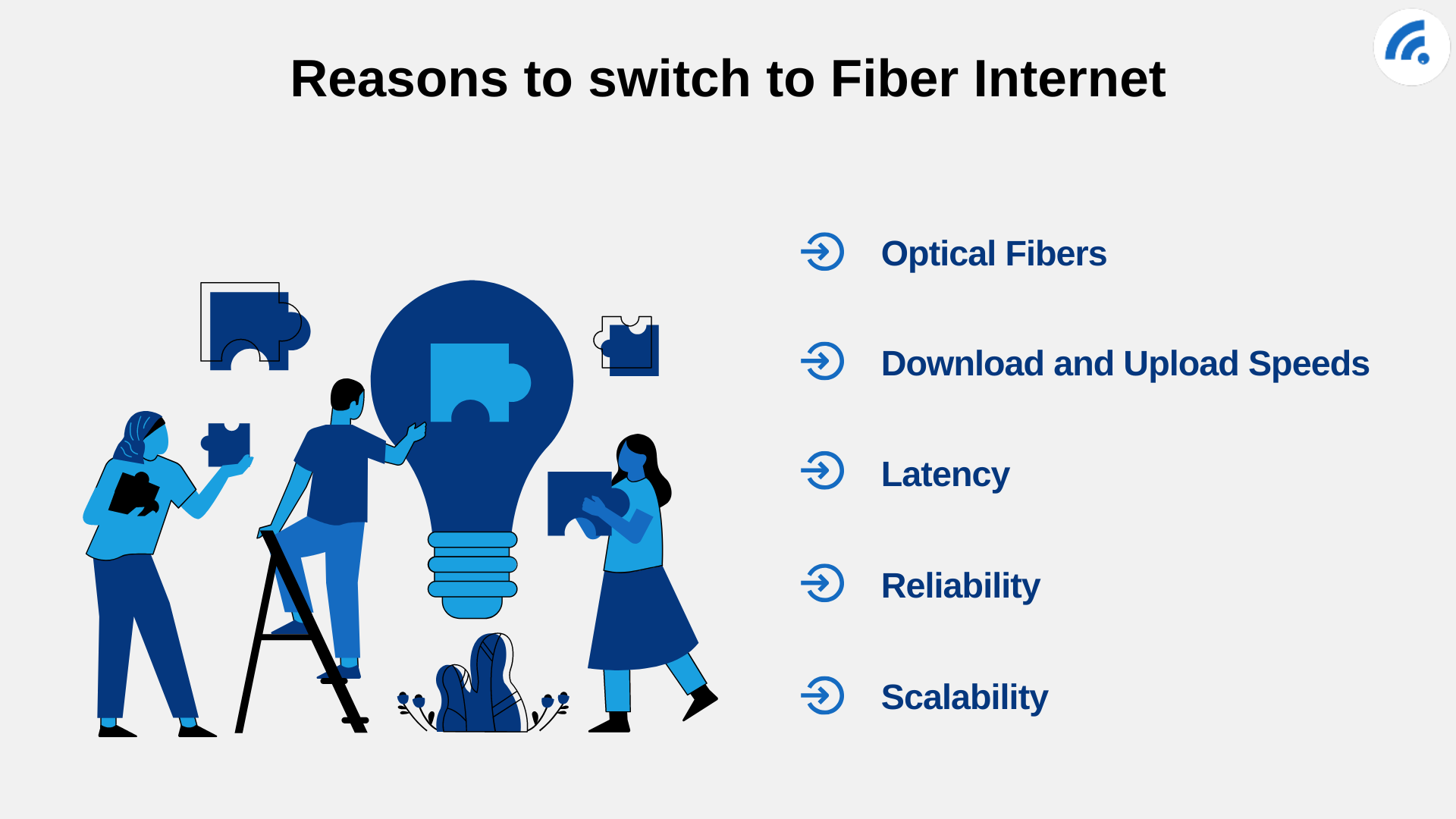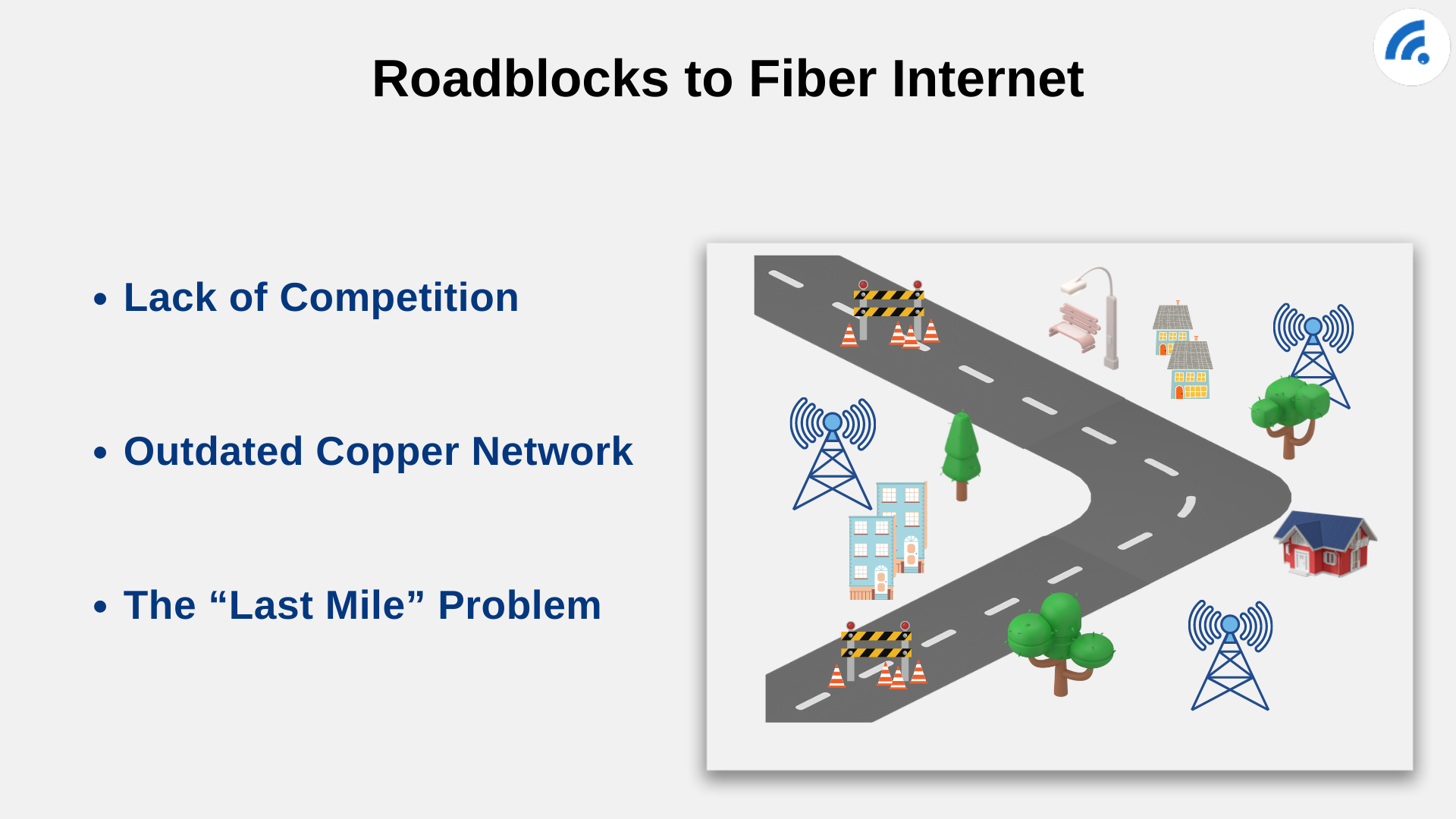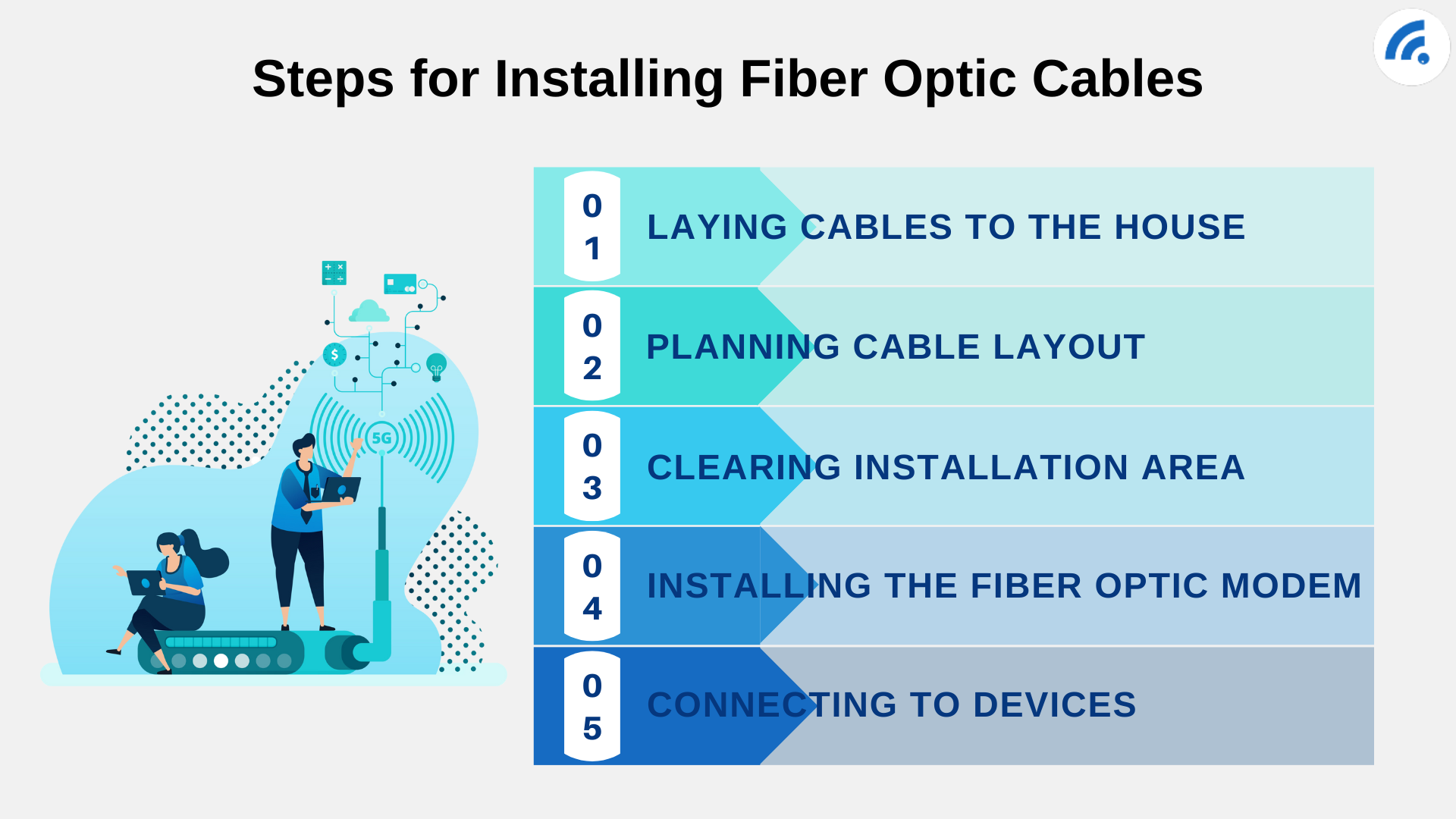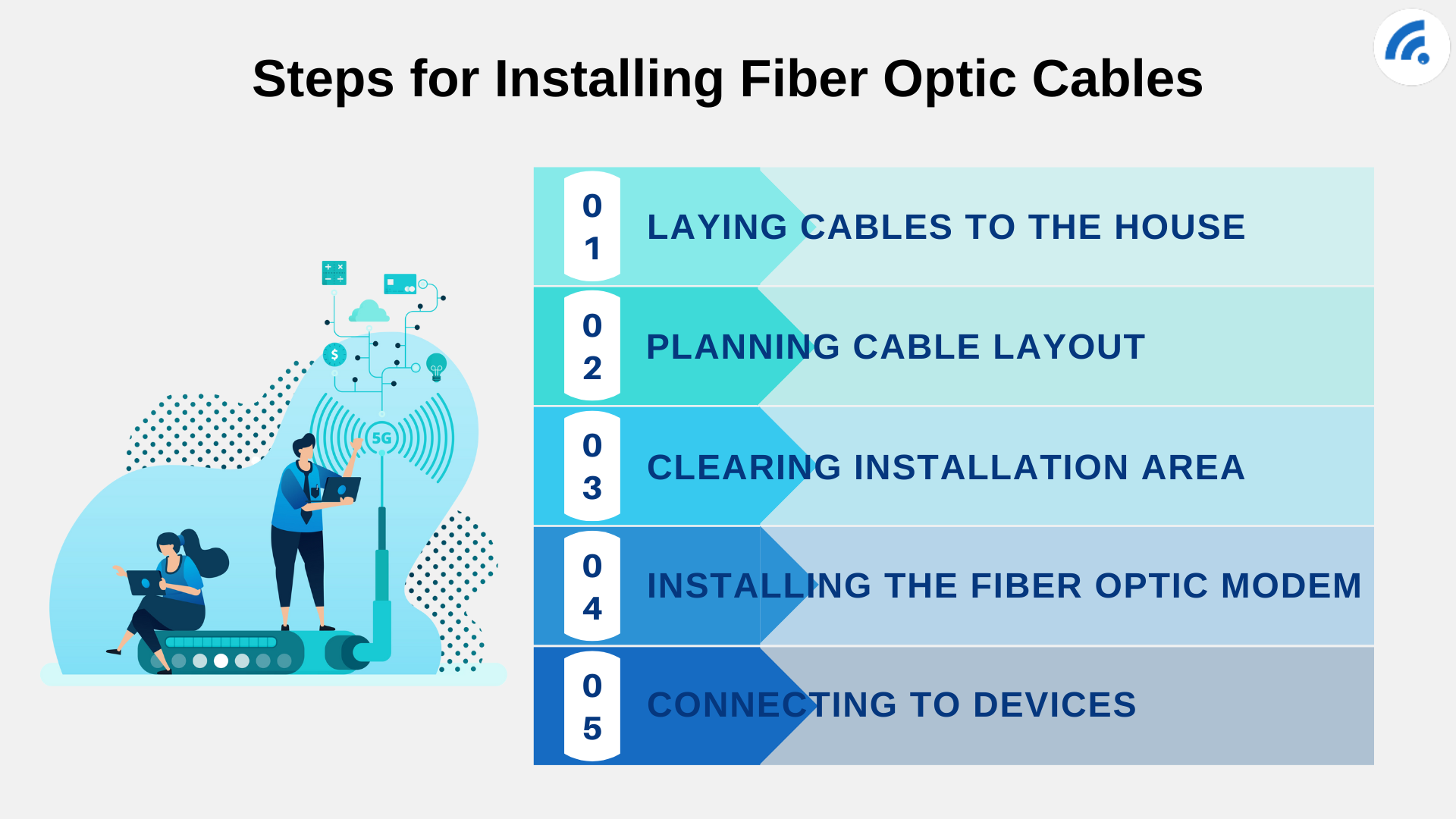Fiber optic cables provide a much faster and more reliable internet connection than traditional copper wiring. Installing them at home can be daunting, but with the right instructions, it can be done by anyone with basic handyman skills.
In this article, we will discuss the basics of fiber optic installation, from choosing the right equipment to safety procedures. We will also provide a step-by-step guide on how to install fiber optic cables in your home.
Why Install Fiber Internet?

Fiber optic cables are made of extremely thin strands of glass or plastic. They can transmit data at very high speeds, making them ideal for internet and TV connections. Most fiber optic internet plans offer speeds of up to 1 gigabit per second (Gbps), which is much faster than the average cable or DSL connection.
You might want to install fiber optic cables in your home for many reasons. If you work from home, have a large family that streams a lot of video content, or want the fastest internet connection possible, fiber optics might be the right choice for you.
If you’re considering fiber internet for your home, the first step is to check availability in your area. Once you’ve confirmed that fiber is an option for you, read on for a complete guide to fiber optic installation.
Optical Fibers and The “Last Mile”
If you’ve ever wondered why some areas still don’t have fiber internet, it all has to do with the “last mile.” The last mile is the distance between a fiber optic network and the end user (i.e., your house). [Source]
For fiber optics to work, a physical connection must be made between the two points. This connection is typically made with thin optical fiber cables made of glass or plastic. Optical fiber cables are not as durable as copper cables, so they must be buried underground or installed in a conduit.
For fiber optics to be installed in your area, there needs to be a fiber optic network in place. This network is typically owned by a local telecommunications company or the government. The fiber optic network will need to be connected to your house with optical fiber cables.
Once the fiber optic network is connected to your house, you will need a particular modem to use it. Most fiber internet providers offer modems for rent or purchase. Alternatively, you can buy your own fiber-compatible modem.
The final step in the fiber optic installation process is connecting the modem to your computer or router. Once everything is configured correctly, you’ll be able to take advantage of blazing-fast internet speeds!
Download and Upload Speeds
One of the most important things to consider when choosing fiber internet is download and upload speeds. Download speed is the amount of data you can receive, while upload speed is the amount of data you can send.
Fiber optic internet plans typically offer speeds of up to 1 Gbps (gigabit per second). This is much faster than the average cable or DSL connection, which offers speeds of around 50 Mbps (megabits per second).
You might consider a fiber optic plan with higher speeds if you have a large family or work from home. Some fiber providers offer plans with speeds of up to 10 Gbps. However, these plans are typically more expensive than lower-speed plans.
Latency
Another important factor to consider is latency. Latency is the amount of time that it takes for data to travel from your computer to the fiber optic network and back again.
Fiber optic networks have very low latency, so that data can travel quickly. This is beneficial for activities that require real-time communication, such as online gaming or video conferencing.
Reliability
Fiber optic internet is also very reliable. Unlike copper cables, fiber optics are not affected by weather or electromagnetic interference. This means that fiber internet connections are less likely to experience disruptions.
Scalability
Lastly, fiber internet is very scalable, which means that it can be easily upgraded to accommodate future needs.
For example, if you need more bandwidth in the future, your fiber provider can simply upgrade your fiber internet plan. Alternatively, if you want to add new services, such as television or phone, your fiber provider can easily add them to your existing fiber internet connection.
Ready to change to a fiber internet connection? Check out these fiber plans from different internet service providers!
Why Some Areas Still Don’t Have Fiber Optic Internet
Even though fiber internet is the fastest and most reliable type of internet, it’s not available in all areas.
The main reason for this is that fiber optic cables need to be physically installed to provide service. This process is known as “laying fiber,” and it is only practical in densely populated areas, such as cities and suburbs.
In less densely populated areas, installing fiber optic cables would be prohibitively expensive.
Another reason fiber internet is unavailable in all areas is that a fiber optic network needs to be in place. This network is typically owned by a local telecommunications company or the government.
In some areas, the fiber optic network has not been built yet. In other areas, the fiber optic network is only available to businesses, not residents.
If you’re interested in getting fiber internet at your home, the best thing to do is check with your local telecommunications company to see if it’s available in your area.
You can also check the website of the National Broadband Map, which is a government-run website that shows the availability of broadband services in the United States.
Installation Costs
If fiber internet is available in your area, the next thing to consider is the installation cost.
The cost of installing fiber optic cables can vary depending on a few factors, such as the length of the fiber run and whether or not you need trenching. Trenching is the process of digging a trench to lay the fiber optic cables.
In most cases, the installation cost is between $500 and $2,000. However, the price can be much higher if you live in a rural area or need trenching.
Some fiber providers charge a monthly fee for equipment rental, while others include the cost of equipment in their monthly plans.
Be sure to ask your fiber provider about the cost of installation and equipment before you sign up for service.
Short-Term Alternatives
If fiber optic internet is not available in your area, there are a few short-term alternatives that you can consider.
The first option is cable internet. Cable internet uses the same type of cable as traditional television service, so it is relatively easy to install.
Cable internet speeds are typically lower than fiber optic speeds but are much faster than traditional DSL service. In addition, cable internet is more reliable than DSL, and it is not affected by weather or electromagnetic interference.
The second option is satellite internet. Satellite internet uses satellites to send data to your home, so it does not require a fiber optic network or telephone line.
However, satellite internet is slower than fiber optic internet and can be affected by weather conditions. In addition, the installation process can be expensive and time-consuming.
Long-Term Roadblocks

Even if fiber optic internet is available in your area, there are a few long-term roadblocks that you should be aware of. The first roadblock is the lack of competition. In most areas, only one fiber provider is available. This lack of competition can lead to higher prices and slower speeds. [Source]
The second roadblock is the copper network. The copper network is the existing infrastructure that fiber optic cables need to connect to provide service.
In many cases, the copper network is outdated and needs to be replaced or upgraded. This process can be expensive and time-consuming, often leading to service disruptions.
The third roadblock is the “last mile” problem. The “last mile” is the distance between the fiber optic network and your home. In many cases, the last mile is the most expensive and challenging part of the fiber installation process.
How to Install Fiber Optic Cables
If you’ve decided that fiber optic internet is right for you, the next step is to learn how to install fiber optic cables.
You first need to contact a fiber provider in your area and ask about installation. The fiber provider will send a technician to your home to assess the situation and give you an estimate of the costs.
Once you have an estimate, you can decide whether or not to proceed with the installation. If you choose to proceed, the fiber provider will send a team of technicians to your home to install the fiber optic cables.
The installation process typically takes between one and three days. After the installation is complete, you will be able to utilize the perks of fiber optic internet!

Laying Cables to the House
After installing the fiber optic network in your area, the next step is to lay the cables to your house. A professional installer typically does this process, but there are a few things that you can do to prepare for the installation. [Source]
Planning Cable Layout
First, you must determine the best route for the fiber optic cables. The installer will need access to both the front and back of your house, so you will need to clear any obstacles that might get in the way.
Clearing Installation Area
Next, you will need to ensure that the area where the fiber optic cables will be laid is clean and free of debris. Once you have prepared the area, the installer can lay the fiber optic cables quickly and efficiently.
Installing the Fiber Optic Modem
After the fiber optic cables have been laid to your house, the next step is to install the fiber optic modem. The fiber optic modem is a device that converts the fiber optic signal into an electrical signal that your computer can use.
Most fiber providers will provide you with a fiber optic modem when you sign up for service. However, if you need to purchase a modem, you should make sure that it is compatible with your fiber provider.
Connecting to Devices
Once you have the fiber optic modem, the next step is to connect it to your computer. Most fiber modems will connect to your computer using an Ethernet cable.
Once the fiber optic modem is connected to your computer, you will be able to enjoy the fruits of having fiber optic internet!
Things to Remember While Installing Fiber Optic Cables
There are a few things that you need to keep in mind while you are installing fiber optic cables in your home.
Cable Route
When planning the fiber optic cables route, keep in mind that they will need to be buried underground. The depth of the trench will depend on the type of fiber optic cable being used. You should contact your fiber provider if you have questions about the trenching process. [Source]
Safety Procedures and Regulations
When you are installing fiber optic cables, it is essential to follow all safety procedures and regulations. This includes wearing the proper safety gear, such as gloves and goggles. In addition, you should make sure that the area around the trench is well-lit and free of obstacles. [Source]
Protecting the Cables
After the fiber optic cables have been installed, you will need to take steps to protect them. This includes regularly inspecting the area around the cables and repairing any damage found. You should also avoid using harsh chemicals or power washing near the fiber optic cables.
Monitoring Vertical Rise
When fiber optic cables are installed in an area with many vertical rises, it is essential to closely monitor the installation process. This is because the fiber optic cables can be damaged if they are pulled too tight. [Source]
If the fiber optic cables are being pulled too tight, you should stop the installation process and contact your fiber provider.
The Bottom Line
Installing fiber optic internet at home can seem intimidating, but with a bit of preparation and the help of a professional installer, you can have it up and running in no time. Keep in mind that there are a few things you need to do to prepare for the installation, such as clearing an area for the cables and making sure your computer is compatible with the fiber optic modem. Once everything is set up, you can enjoy all the benefits of fiber optic internet!
FAQ
How are fiber optic cables installed in homes?
Fiber optic cables are installed in homes by running them from the fiber optic network to the home. The fiber optic cables are typically buried underground.
How much does installing fiber optic cables cost?
The cost of installing fiber optic cables will vary depending on the length of the run and the type of fiber optic cable being used.
Do I need a special modem for fiber internet?
Yes, you will need a fiber optic modem to connect to fiber internet.
How do I know if my house is fiber internet-ready?
The best way to determine if your house is fiber internet-ready is to contact your fiber provider.
What equipment is needed for fiber optic internet?
In addition to a fiber optic modem, you will need an Ethernet cable to connect the fiber optic modem to your computer.

